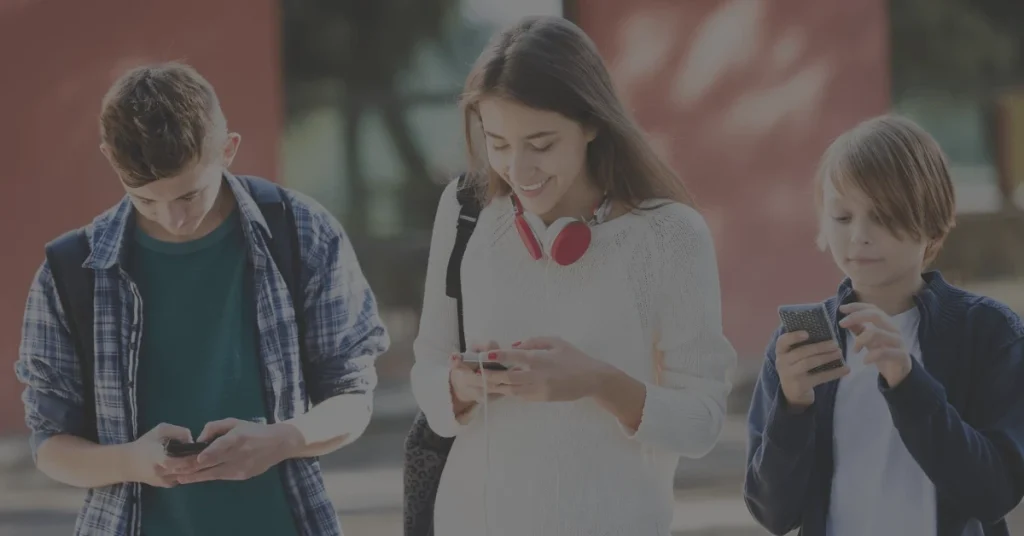In the past decade, we have seen an incredible evolution of technology in every aspect of our lives. It is an understatement to say that technology has just merely improved, it has actually made leaps and bounds. We have seen the rise of technologies such as AR and VR to smartphones and artificial intelligence and machine learning; technology that has become a part of our everyday life and that will become the reality for all people around the world. One thing that has become prevalent among all people due to smartphones is the use of mobile applications or mobile apps as most people call them.
Smartphones entered our lives around early 2007 and along with them, software applications followed. At first, applications were intended to offer mostly productivity assistance, for example, to check emails and calendar but over time they expanded to several other areas such as gaming and geological location-based services. Sometime later student information systems came along. Student information systems are platforms that provide capabilities for registering students in courses, documenting, grading and other assessment scores. Millions of schools around the world are placing their trust in student information systems for data management and effective organization.
Now regarding smartphones, the modern smartphone user has an average of 35 mobile applications installed on their device, some pre-installed but mostly downloaded. This means that users spend a significant amount of time on their phones and browsing apps. Sounds terrifying but who can blame users? Everything is in the palm of our hands nowadays. Literally. So, what are the advantages that you have when you mix those two incredibly popular technological solutions: mobile apps and SIS? Below we will see the four major reasons that make student information mobile apps the future in the education world.

Everything in the palm of users’ hand
Students require a lot of information from their institutions such as admission notices, timetables, event details, etc. Currently, information is distributed to students in two ways. In the traditional approach, which is on college boards via announcements or through traditional communications such as telephones or bulk emails. And secondly, on the institutions’ website. Both have their own disadvantages: the first approach is quite messy and wastes a lot of paper and time the second doesn’t offer a personalized experience; just a collective information posting. So, let’s see what a mobile app can offer to an educational environment:
- Speed and efficiency: Mobile phones offer several advantages to users, the first and possibly the most important is speed/time-saving. Most people always carry their smartphones with them, and this fact gives them the opportunity to access information from any location without the help of a traditional desktop computer. Smartphones are the means of choice for most young people who tend to use their mobile devices much more than their computers. Mobile apps make accessing and processing information faster not just due to convenience but faster than the web. Apps can personalize information for the user. Speed and personalization make mobile apps more effective.
- Precision and adaptability: Applications use the information to precisely personalize the user experience. Mobile computing and context‐aware application concepts can provide more user‐centric information services to students. Most mobile apps tend to ask for their user’s data such as geolocation. With the accumulation of data, applications create a User Profile to address the needs of every user in order for the application to cover those needs or likes and dislikes. As a result, this offers great capabilities through the use of the application.
- Trust and easy access: Mobile users constantly download apps on their phones. Mobile phones as of 2019 have discovered several ways in order to keep your device safe regarding data theft. Passwords and face recognition are some of the most popular techniques mobile data developers came up with in order to keep your device secure. In addition, with the massive use of mobiles, apps users tend to feel more comfortable to share personal information in exchange for a more personalized experience as well. This makes mobile phones and apps more secure for users.
- A large number of users support: As previously stated, the majority of young people chose mobile devices over the traditional desktop computer. This trend is predominantly identified with millennials and generation z. To be precise, 62% of millennials prefer to do activities on applications instead of a desktop for various reasons. With a growing number of mobile applications available on app stores and the massively improved capabilities, there’s no question why people turn to applications more and more. A May 2012 comScore study reported that during the previous quarter, more mobile subscribers used apps than browsed the web on their devices: 51.1% vs. 49.8% respectively. Market research firm Gartner predicted that 102 billion apps would be downloaded in 2013 (91% of them free). This shows the immense preference mobile users have over the regular browser experience. This is a mobile app world and we are living in it.
More into the world of Student Information Systems
Student information systems, like Classter, have adapted many of their functions for smart devices thus offering new options to users. One of the very important functions adapted for mobile devices is the use of Student Attendance keeping. Mobile applications simplify the absence registration process since all data is recorded locally wherever you may be, on the device and they are then sent immediately to the registry when the device is connected to the Internet.
Mobile use in the educational field is also changing the way we communicate between teachers and students and can be used effectively to improve instructional quality. If you are a teacher, you can easily handle your classroom through your student information system app or even communicate with your students and their parents. Imagine the data you record in-class to be spread in real-time to parents, students and school administrators as well as the ability to motivate your students while in-class.
FAQ’s
Mobile apps offer unparalleled convenience, allowing users to access essential SIS features anytime, anywhere. With features like attendance tracking, event notifications, and communication tools, mobile apps streamline administrative tasks and improve user engagement.
Mobile apps provide speed, efficiency, precision, and adaptability in accessing and processing student information. They offer personalized experiences, enhanced security measures, and cater to the preferences of modern users who prefer mobile devices over traditional desktops.
Classter’s expertise in integration capabilities enables smooth synchronization between mobile apps and existing SIS platforms. Through APIs and advanced technology, Classter ensures that users experience seamless connectivity and data accessibility across devices.

